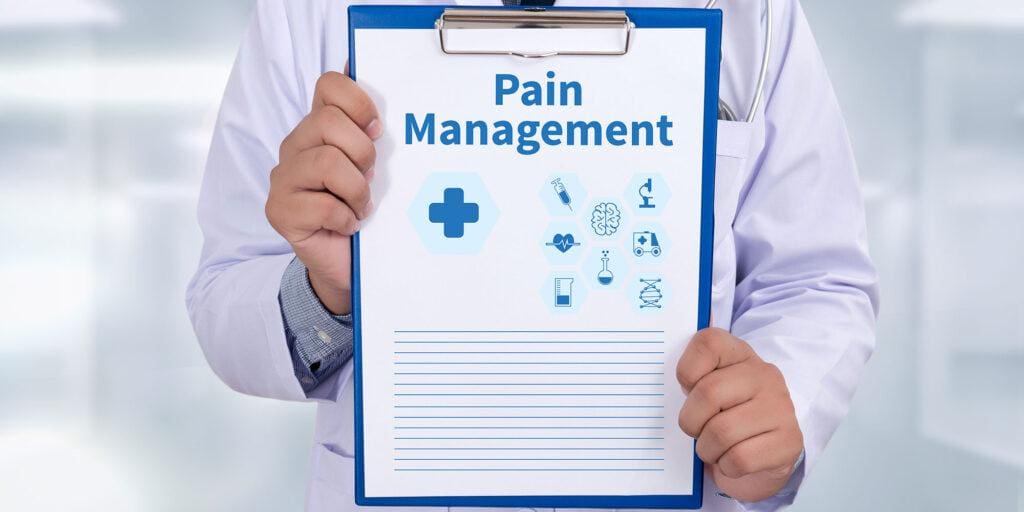Researchers have uncovered new evidence that can help to identify the genetic risk for opioid use disorder in people who may need to take these medications for chronic pain. But what are the next steps? And what does this mean for the future of pain management? Read on to learn more about the genetic risk for opioid use disorder, your chances of struggling with one, and what to do when faced with the choice of taking an addictive substance or living with pain.
The Current State of the Opioid Epidemic
 Before jumping into the new research on the genetic risk for opioid use, we must acknowledge the current status of this epidemic in the United States. Opioid addiction is considered an epidemic because of how widespread and impactful it is on Americans. Approximately 10 million people misuse opioids annually. Unfortunately, deaths related to opioid overdose increased by nearly 30 percent in just the past year.
Before jumping into the new research on the genetic risk for opioid use, we must acknowledge the current status of this epidemic in the United States. Opioid addiction is considered an epidemic because of how widespread and impactful it is on Americans. Approximately 10 million people misuse opioids annually. Unfortunately, deaths related to opioid overdose increased by nearly 30 percent in just the past year.
While not all people who struggle with opioid addiction also have chronic pain, living life with pain is a major risk factor for developing an opioid use disorder. This has to do with the fact that opioids are generally prescribed to treat pain. Often, doctors will prescribe opioids for people with chronic pain because there are no other obvious solutions, and the patient needs some sort of relief.
But the side effects from opioids, including the risk for opioid addiction, are important to consider. Not only can it be dangerous to be on opioids in the short- and long-term, but weaning off of opioids when it’s time can also cause an array of problems.
Withdrawal symptoms common in people trying to stop opioid use include:
- Rapid heartbeat
- Nausea and vomiting
- Insomnia
- Increased agitation
- Return of body pain
These make it challenging to recover from an opioid use disorder at the same time as maintaining pain management. The return of pain often leads to people with chronic pain relapsing or needing to seek out other treatments for opioid use disorder, such as medication-assisted therapy (MAT) and other addiction services.
But could all of this be avoided if we knew more about the genetic risk for opioid use in certain patients? Well, that’s what experts have been trying to find out.
What We Know About the Genetic Risk for Opioid Use
In the past, scientists haven’t been able to uncover much about specific genetic markers that put certain people at a higher risk for developing an opioid addiction or another type of substance use disorder. Research always indicated that substance use struggles could be heavily influenced by a family history of addiction as well as environmental factors, such as one’s upbringing, experiences of trauma, and symptoms of co-occurring disorders. So, this new discovery from Yale researchers on the genetic risk for opioid use gives a bit more insight into the biological component that contributes to opioid addiction.
Essentially, researchers gathered data from over 600,000 participants across the globe and analyzed their genetic makeup with one focus in particular: opioid use. They found that there are 19 different genetic markers that differentiate the people with an opioid use disorder in this study.
This means that scientists are now able to better understand and identify these genetic markers in people who are at risk for having an addiction to opioid disorder—possibly before they are ever prescribed opioids and, therefore, reducing some of the risk of addiction. If patients know that they are at an increased risk for developing an opioid use disorder, they may make different decisions when it comes to their pain management care.
What This Means for People with Chronic Pain
Of course, it’s not possible to check each and every person who is going to be prescribed opioids for this genetic risk. Even if this were possible, many people with chronic pain who rely on opioids to function would be left with an already daunting decision: live with pain or live with the risk of addiction.
This is a challenging reality for anybody living with chronic pain, but especially those who have a genetic risk for opioid use disorders. But ultimately, the decision to take opioids or other medications for pain relief should be yours. That said, being informed of all the risks as well as alternative treatment options can help you to make that decision
For people with chronic pain who are at risk for opioid use disorder and those who choose not to take these types of pain medications, there are still options out there to manage pain. Examples include:
- Alternating ice and heat
- Eating an anti-inflammatory diet
- Doing gentle exercises
- Physical therapy
- Chiropractic care
- New therapeutic approaches to pain
Finding a balance between all of these pain management strategies can be beneficial for some people. Some of these techniques will work wonders for certain people with pain and others might even exacerbate aches and pain. This is why it’s important to try different methods, under the care of a trusted professional like a pain management specialist, safely and slowly.
Pain Management Is Not Just Physical
 Another important aspect of pain management has to do with mental health. People with chronic pain are not just at an increased genetic risk for having an opioid addiction—other mental health disorders go hand-in-hand with chronic pain as well. It is common to experience anxiety, depression, and other forms of substance use if you live with chronic pain, especially if your pain is not currently well managed.
Another important aspect of pain management has to do with mental health. People with chronic pain are not just at an increased genetic risk for having an opioid addiction—other mental health disorders go hand-in-hand with chronic pain as well. It is common to experience anxiety, depression, and other forms of substance use if you live with chronic pain, especially if your pain is not currently well managed.
If you live with chronic pain, having mental health support with professional counseling can get you more prepared to conquer each day. In addition to this, there are chronic pain advocacy groups out there to lean on during the hardest of times.
Joining in conversations about chronic pain like the ones through the Pain Resource community can not only give you a space to talk about alternatives to opioids or other pain management tips, but these conversations can also help you to feel less alone. Having the right support—whether that’s through scientists looking into the biology behind addiction, specialists trying to treat pain, or the words of others who know the struggle of living with chronic pain—can make this fight a little less painful.
What questions do you have about Opioid Use Disorder?
We want to read all about it in the comments section below!
What topics about Opioid use should we cover next?
Email us at info@painresource.com with your ideas.
Are you a member of our online community?
Join the fastest-growing chronic pain support group today by clicking here!


Well, I guess this explains a lot– maybe some folks really ARE just more pre-dispositioned for this kind of thing. I just hope with this comes more understanding from those who don’t have to live with it.